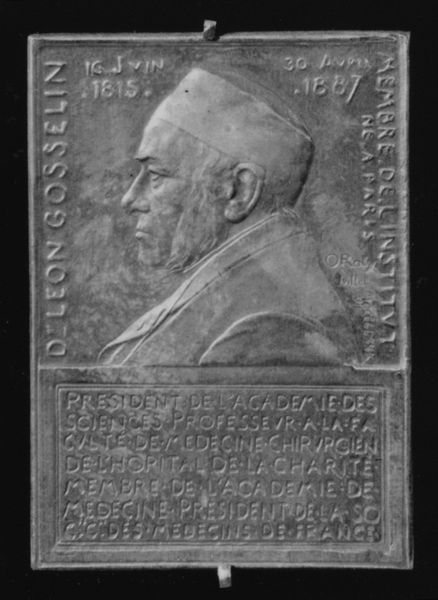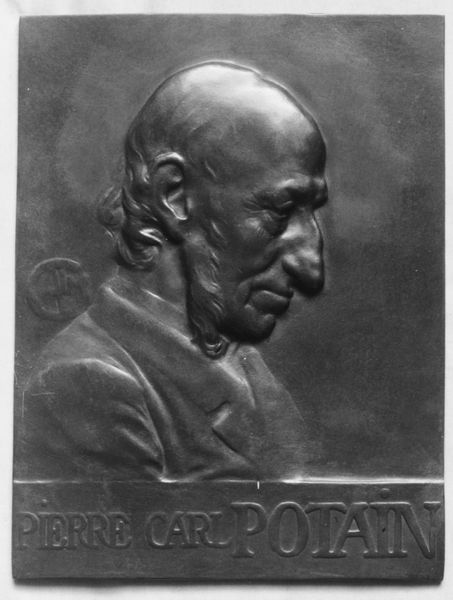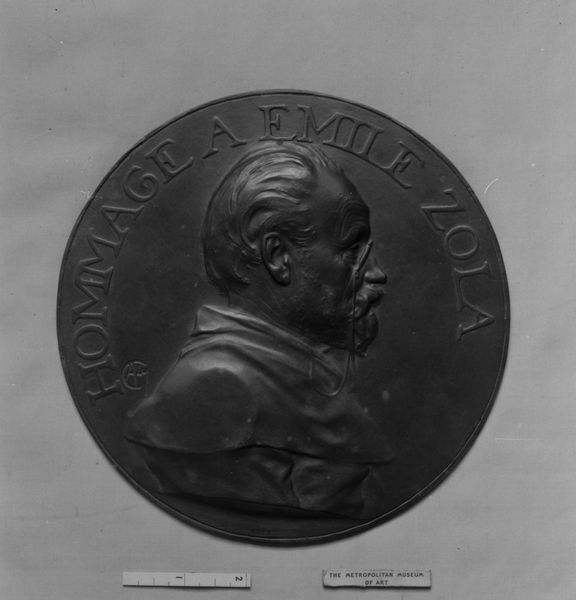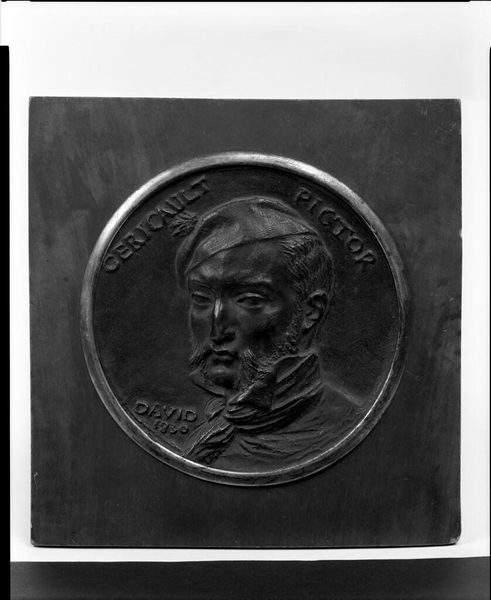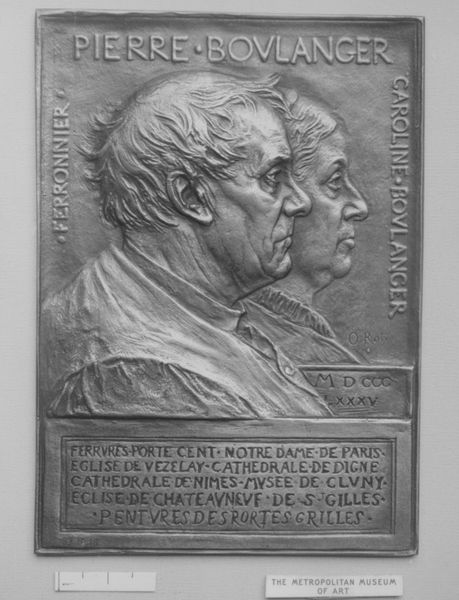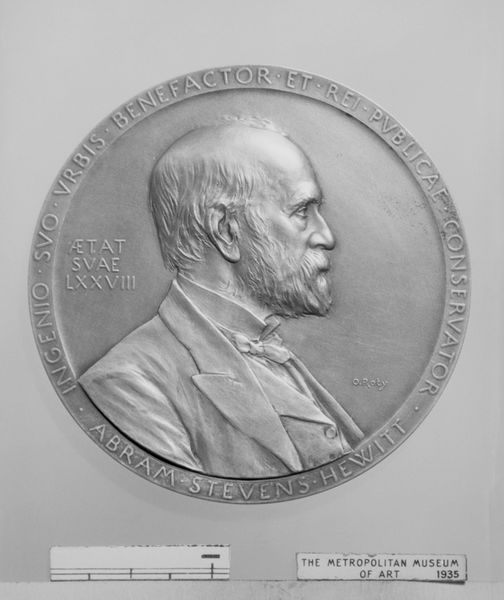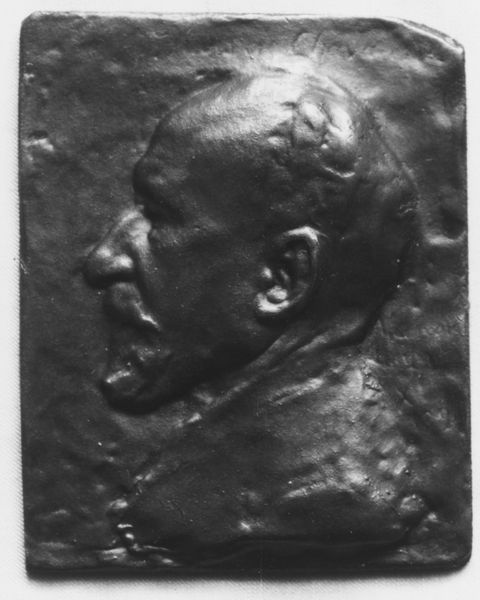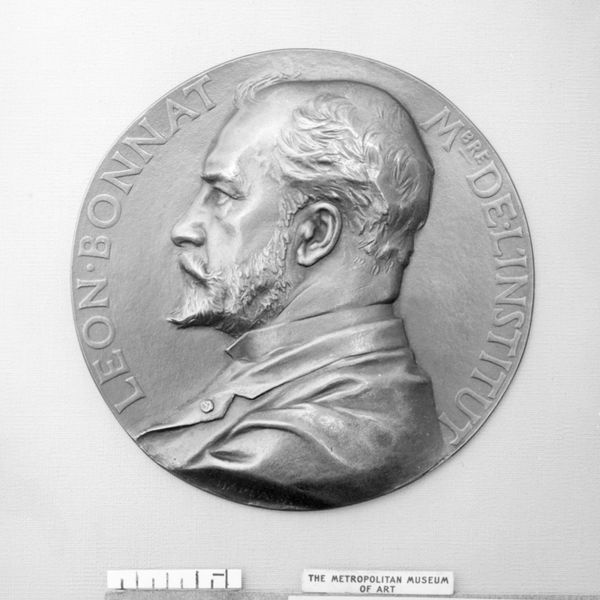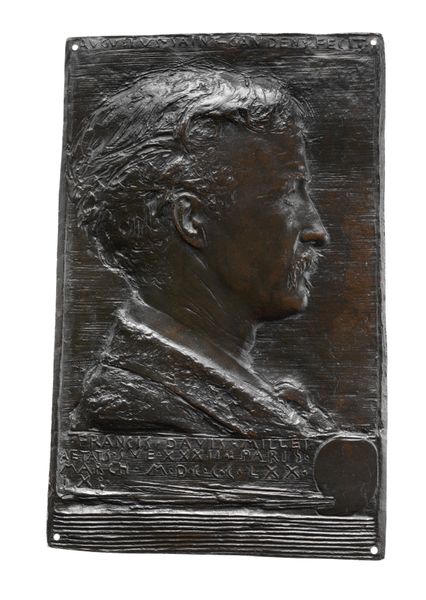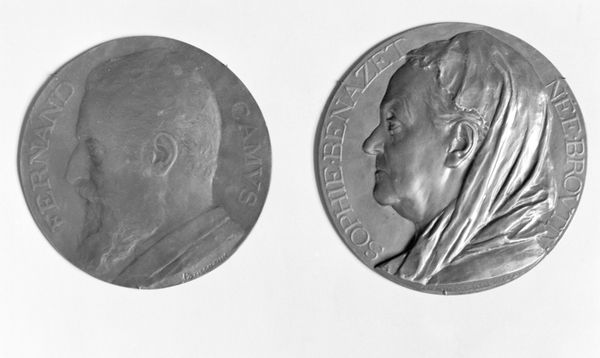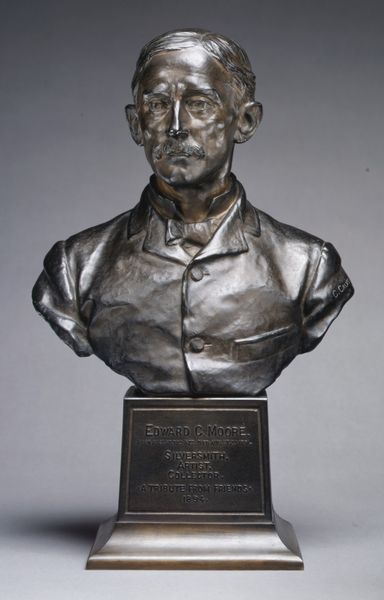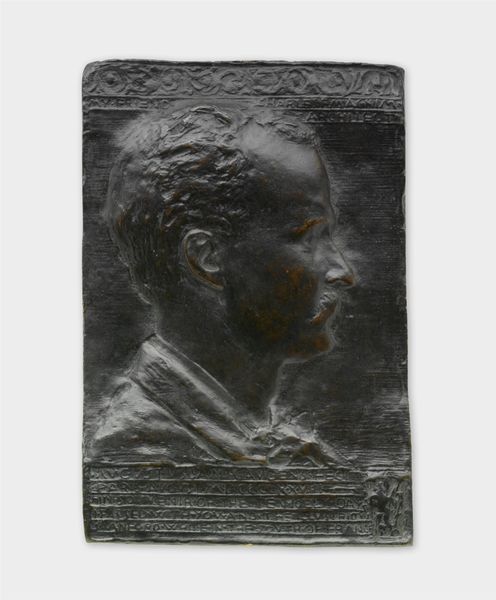
Portrait of Dr. Ernest Besnier 1885 - 1899
0:00
0:00
sculpture
#
portrait
#
portrait
#
sculpture
#
sculpture
#
decorative-art
Dimensions: 5 5/8 × 7 1/8 in. (14.3 × 18.1 cm)
Copyright: Public Domain
Editor: We're looking at Alexandre-Louis-Marie Charpentier's "Portrait of Dr. Ernest Besnier," a sculpture created sometime between 1885 and 1899. The somber profile and the dedication by his students and friends make it feel quite reverential. How do you read this piece? Curator: It's tempting to view this simply as a commemorative portrait. But placing it within the context of late 19th-century French society invites deeper consideration. Besnier was a dermatologist during a time when skin diseases carried enormous social stigma. The plaque then speaks not just of remembrance but of the power dynamics inherent in the medical profession, and how this translates into notions of influence and power within social hierarchies. Editor: So, the 'friends and students' dedicating it isn't just sentimental? Curator: Precisely. Who gets remembered, and how, is always a political question. This bronze, displayed publicly, affirms Besnier’s position within the established power structures. Consider the rigid formality and stoicism conveyed in the low relief against anxieties related to health and hygiene during this time. In what ways does this portrayal address these intersecting spheres? Editor: That is a great point. It highlights how intertwined personal recognition and broader social structures actually are. I definitely appreciate how thinking of art through the lens of cultural issues opens it up to wider discussion. Curator: Absolutely. Art is rarely just aesthetic. It's a reflection, and often a reinforcement, of societal norms, power structures, and deeply rooted historical narratives. Always consider the unspoken dialogue an artwork generates.
Comments
No comments
Be the first to comment and join the conversation on the ultimate creative platform.
